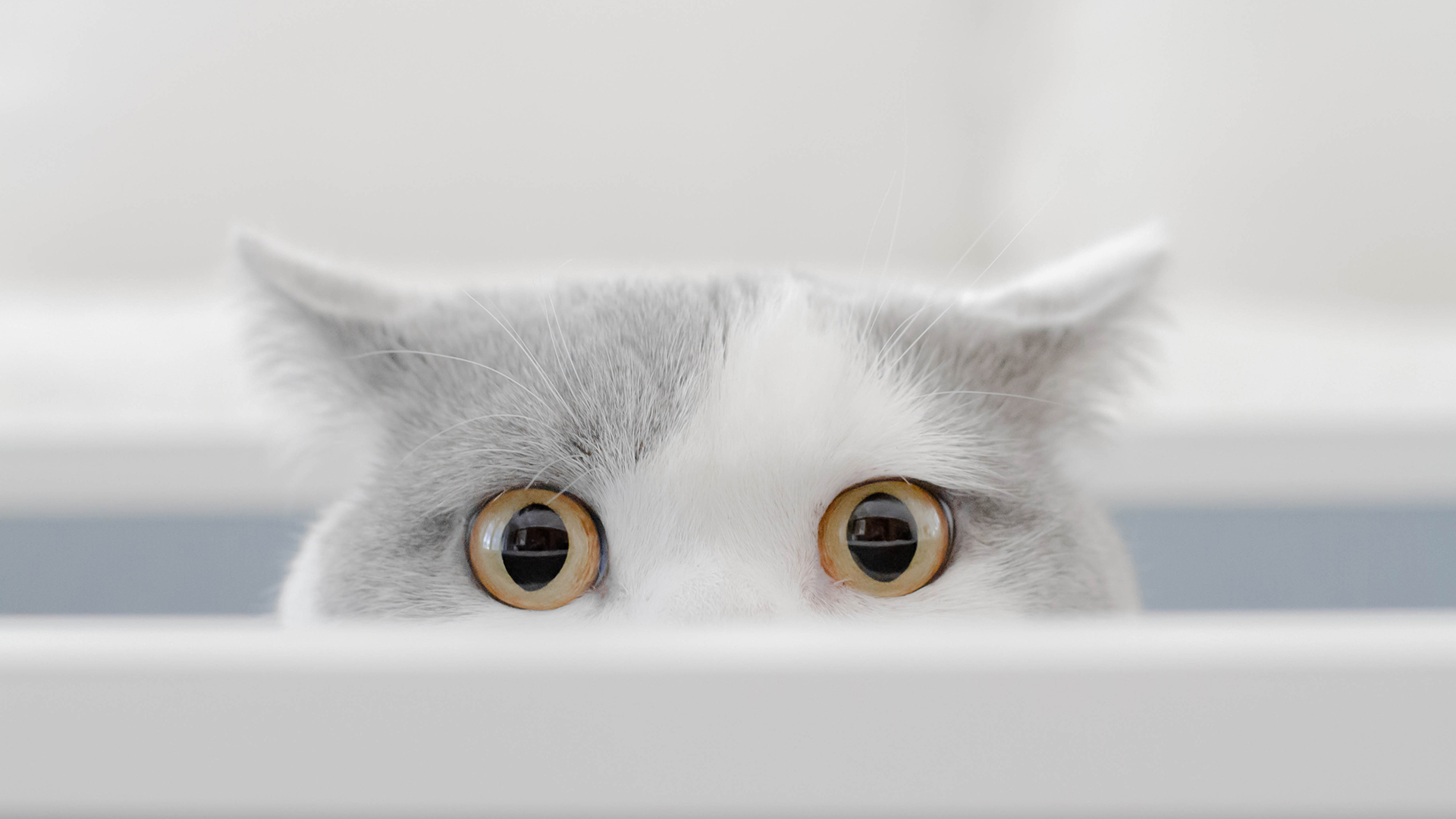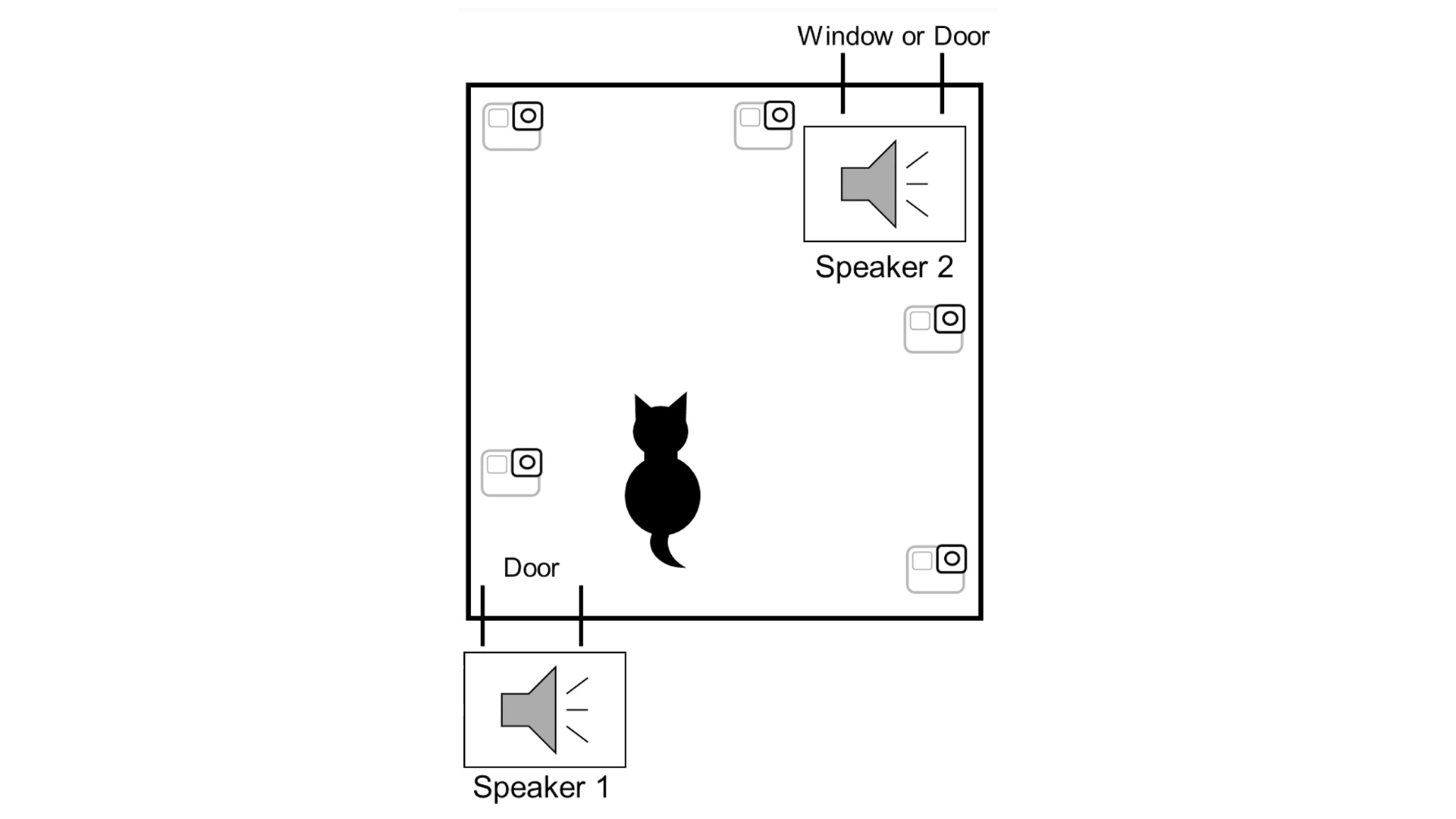You can't hide from your cat, so don't even try
Cats create "mental maps" using audio cues, scientists have discovered.

Your cat is probably keeping track of where you are, even if your feline friend isn't in the same room with you and can't see you.
Scientists recently learned that domestic cats create "mental maps" that tell them where nearby humans are located, based on where sounds are coming from. The researchers tested cats by playing recordings of human voices calling the cats' names; they then played those recordings again, only this time through a speaker in a different place, so that the same sounds came from farther away.
The cats acted surprised when the familiar voice came from a location that they didn't expect, based on what they had already heard. This suggests that cats spatially orient their unseen human companions using audio cues — a cognitive ability that was previously unknown in felines.
Related: 20 weird dog and cat behaviors explained by science
Knowing that something continues to exist even if it's out of sight (as the cats demonstrated in their responses) is called object permanence, and it's a test that researchers use to measure animal intelligence. Human infants typically begin to develop object permanence when they're around 8 months old, and this ability becomes more refined when babies reach 10 to 12 months old; at that stage, babies can find hidden objects, and they begin to realize that their parents and caregivers don't disappear just because they can't be seen, according to the Mayo Clinic.
Prior research has demonstrated object permanence in primates such as chimpanzees (Pan troglodytes), bonobos (Pan paniscus), gorillas (Gorilla gorilla) and orangutans (Pongo pygmaeus); and in nonprimates such as Eurasian jays (Garrulus glandarius), bears (Melursus ursinus and Helarctos malayanus euryspilus), dogs (Canis lupus familiaris) and cats (Felis catus), scientists reported Nov. 10 in the open-access journal PLOS One.
For the new study, they decided to test cats using audio signals because cats are known for their exceptional hearing and are capable of finding hidden prey under conditions of low visibility. "Indeed, cats appear to be good at inferring physical and social presence from sounds," the authors wrote.
Get the world’s most fascinating discoveries delivered straight to your inbox.
Previously, study lead author Saho Takagi, a doctoral candidate at Kyoto University in Japan, found that when cats heard the sounds of their owners' voices, they then expected to see their owners' faces. In other studies, cats have also shown that they can distinguish between familiar and unfamiliar human voices and that they can locate hidden objects. So "it seems plausible that cats should be able to mentally map others' locations based on vocalizations," the scientists said in the study.
For their experiments, they placed cats into three groups; each group was split in two depending on where the cats lived, either at cat cafés or in domestic homes. Cat groups listened to a different combination of sounds: Group one heard recordings of caregivers or strangers calling their names; group two listened to sounds of other cats; and group three heard random electronic noises.
The researchers then played the sounds in two passes: first through a speaker near a door that was close to the cats, and then through a speaker next to a door or window that was farther away. Observers noted how surprised the cats seemed by the seemingly unexplained "teleportation" of the sounds from one place to another, rating their level of surprise on a scale of 0 (not at all surprised) to 4 (very surprised). Signs of their surprise included staring toward the voice's "original" position, moving their ears and heads, looking around them or moving about the room, according to the study.
Overall, the cats showed the most surprise when their owner's familiar voice appeared to "teleport." This suggests that the cats formed a mental image of their unseen owners and mapped their locations based on where they first heard the voice, "showing evidence of socio-spatial cognition," the researchers reported.
Being able to form a mental picture of the outside world "is an important feature in complex thinking," and these findings offer new insights that could inform future studies of feline cognition, the study authors concluded.
Originally published on Live Science.

Mindy Weisberger is a science journalist and author of "Rise of the Zombie Bugs: The Surprising Science of Parasitic Mind-Control" (Hopkins Press). She formerly edited for Scholastic and was a channel editor and senior writer for Live Science. She has reported on general science, covering climate change, paleontology, biology and space. Mindy studied film at Columbia University; prior to LS, she produced, wrote and directed media for the American Museum of Natural History in NYC. Her videos about dinosaurs, astrophysics, biodiversity and evolution appear in museums and science centers worldwide, earning awards such as the CINE Golden Eagle and the Communicator Award of Excellence. Her writing has also appeared in Scientific American, The Washington Post, How It Works Magazine and CNN.



